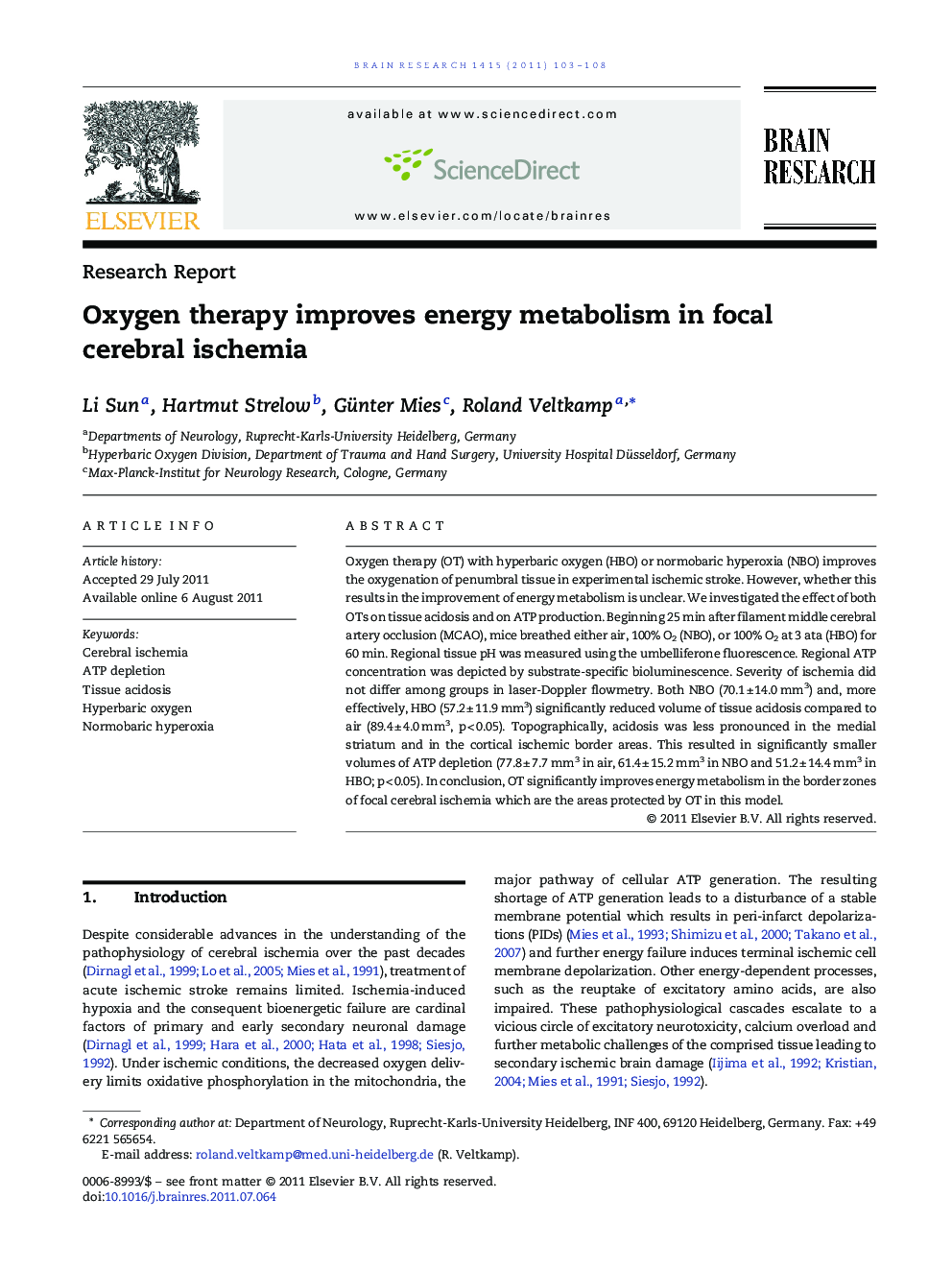| Article ID | Journal | Published Year | Pages | File Type |
|---|---|---|---|---|
| 6264733 | Brain Research | 2011 | 6 Pages |
Oxygen therapy (OT) with hyperbaric oxygen (HBO) or normobaric hyperoxia (NBO) improves the oxygenation of penumbral tissue in experimental ischemic stroke. However, whether this results in the improvement of energy metabolism is unclear. We investigated the effect of both OTs on tissue acidosis and on ATP production. Beginning 25 min after filament middle cerebral artery occlusion (MCAO), mice breathed either air, 100% O2 (NBO), or 100% O2 at 3 ata (HBO) for 60 min. Regional tissue pH was measured using the umbelliferone fluorescence. Regional ATP concentration was depicted by substrate-specific bioluminescence. Severity of ischemia did not differ among groups in laser-Doppler flowmetry. Both NBO (70.1 ± 14.0 mm3) and, more effectively, HBO (57.2 ± 11.9 mm3) significantly reduced volume of tissue acidosis compared to air (89.4 ± 4.0 mm3, p < 0.05). Topographically, acidosis was less pronounced in the medial striatum and in the cortical ischemic border areas. This resulted in significantly smaller volumes of ATP depletion (77.8 ± 7.7 mm3 in air, 61.4 ± 15.2 mm3 in NBO and 51.2 ± 14.4 mm3 in HBO; p < 0.05). In conclusion, OT significantly improves energy metabolism in the border zones of focal cerebral ischemia which are the areas protected by OT in this model.
⺠NBO significantly reduces the area of tissue acidosis during the early phase of ischemia. ⺠HBO more effectively decreases tissue acidosis. ⺠Both oxygen therapies significantly decrease the ischemic area in which the ATP is depleted.
